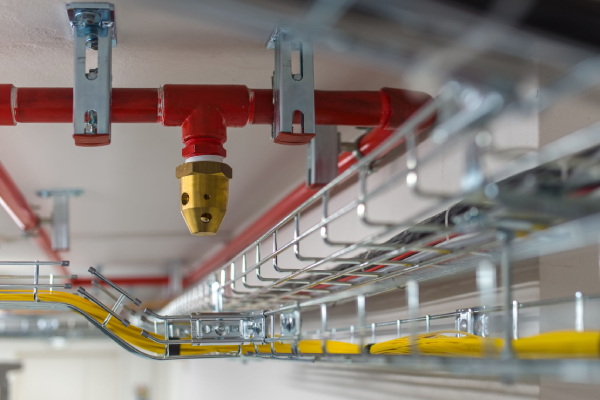
Fire sprinkler systems are essential for safeguarding buildings and structures from fire hazards. These systems are commonly installed in warehouses, multi-story buildings, and industrial facilities to detect and suppress fires in their early stages. To ensure optimal performance, it is crucial to comply with local regulations and international standards, such as those provided by the National Fire Protection Association (NFPA).
When designing fire sprinkler systems, factors like the function of the building and the local water supply must be evaluated. In many cases, the local water supply doesn't provide the required pressure levels, necessitating the installation of a storage tank and a pumping station, which includes both duty and standby pumps.
The water flow through the sprinkler system is critical for its efficiency. The discharge from each sprinkler head can be determined using the following formula:
Q = K√P
Where:
Q is the flow rate (liters/minute)
K is the constant for the sprinkler
P is the pressure at the sprinkler (bar)
Sprinklers come in various designs, depending on the application, and selecting the correct type for a building's fire risk is essential. NFPA standards provide guidelines for the spacing of sprinkler heads to ensure proper coverage in the event of a fire.
In one example, a warehouse with dimensions of 180 ft x 150 ft, equipped with 200 sprinkler heads, was modeled using SINET Fluid Flow. The system was designed to have a flow rate of 215 GPM, focusing on 12 remote sprinklers. Hydraulic calculations were performed, with a friction coefficient of 130 for most pipes and 140 for underground pipes.
The results from SINET Fluid Flow closely matched the manual calculations. For instance, the flow rate at the most remote sprinkler was determined to be 20.3 GPM, and the static pressure at the sprinkler head was calculated to be 14.3 psig, which aligned perfectly with the hand-calculation results. SINET Fluid Flow also identifies any sprinklers operating below the minimum pressure requirement, ensuring that the system operates efficiently.
In another scenario, SINET Fluid Flow was used to design a sprinkler system for a textile facility with a total system flow rate of 1750 liters per minute. The Hazen-Williams coefficient for the pipes was set at 125, and the system was optimized to operate with 15 remote sprinklers. The flow rate at the most distant nozzle was 90 liters per minute, with a pressure of 6.2 barg at the system inlet.
SINET Fluid Flow’s advanced simulation and optimization capabilities allow engineers to design fire sprinkler systems that meet stringent safety and performance standards. By optimizing system performance, SINET Fluid Flow helps provide reliable fire protection while ensuring the efficiency of the system.